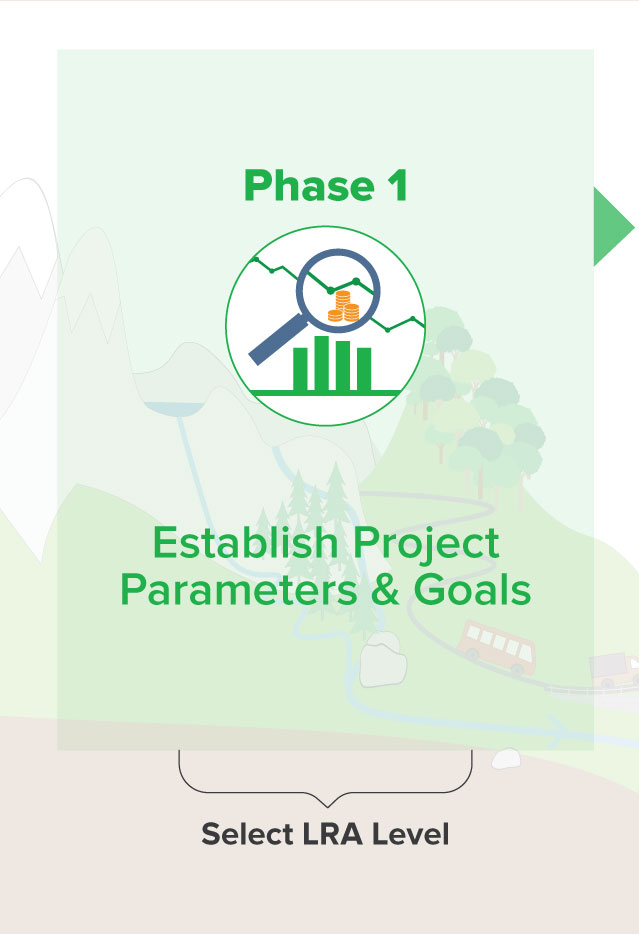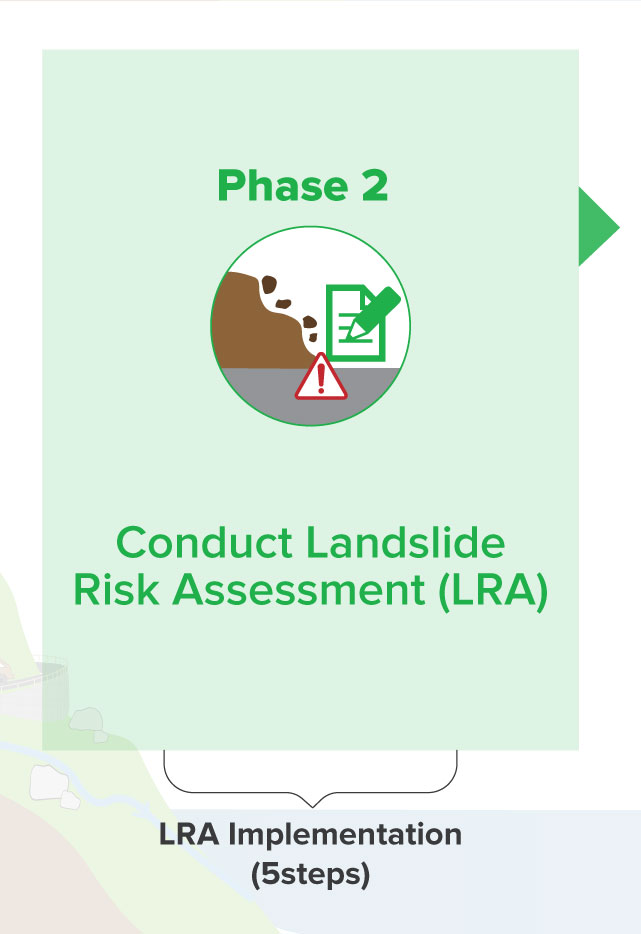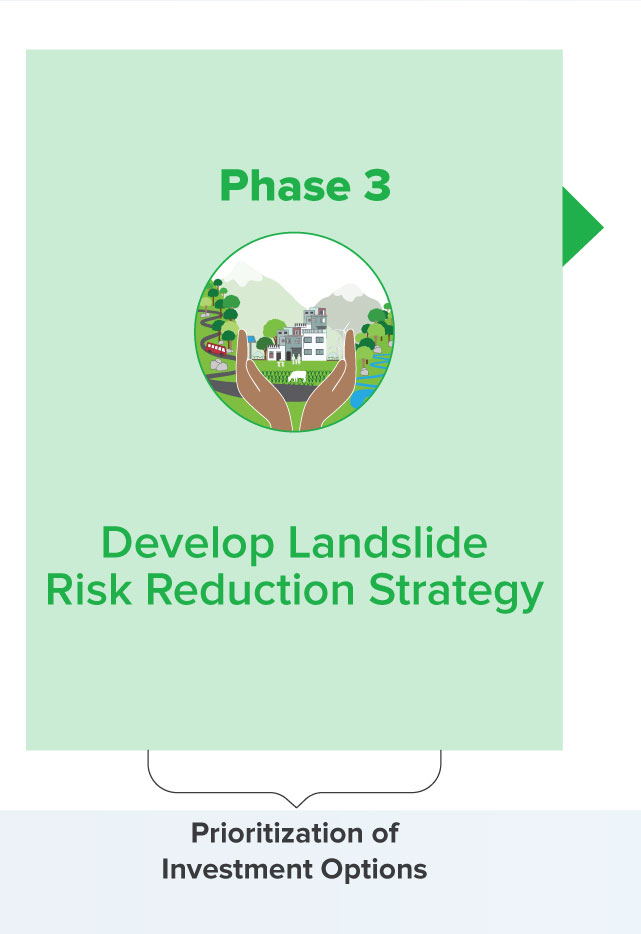Framework
The framework for incorporating NBS solutions for landslide risk reduction used in this guidance tool follows three phases.
NBS Solutions for Landslide Risk Reduction
In Phase 1, the project parameters are established. These include defining the landslide risk problem to be solved, the objective of the activity, and the activity’s scope, budget and timeline. Establishing these project parameters allow the project team to select the landslide risk assessment level along a spectrum from screening analyses to in-depth high-resolution risk assessments with subsequent cost-benefit analyses of risk reduction options.
Once the LRA level has been selected and a consultant with domain expertise hired (if necessary), the project team with the consultant conducts the LRA, obtaining estimates for landslide hazard, exposure, vulnerability, and then overall risk.
Phase 2 LRA results inform Phase 3, where the team takes stock of landslide risk reduction options that may address the risks identified and conducts analyses to prioritize across the risk reduction options, including determining where and how NBS might fit into the complete solution space.
This section of the guidance tool discusses each of these phases in turn, providing additional detail for each phase, and links and deep dives for aspects of the technical work for users who are interested in a deeper understanding of the methodologies.


